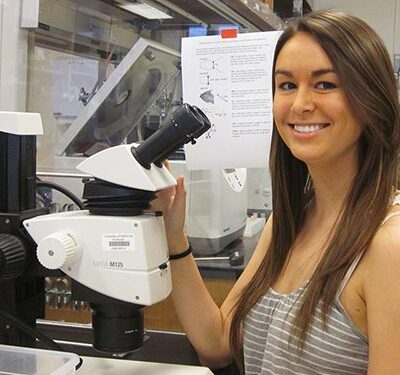Rachel Agoglia L&S Sciences
Genetic Analysis of Evolved Tooth Gain in Sticklebacks
Understanding the genetic mechanisms that underlie morphological evolution is a long-standing goal in biology. The threespine stickleback (Gasterosteus aculeatus) is an emerging model organism with features ideal for studying the molecular basis of morphological evolution. Several stickleback populations display evolved differences in tooth number, likely adaptive to match different diets. These differences in tooth number are largely controlled by a Quantitative Trait Locus (QTL), a genomic region controlling a quantitative trait. This QTL is located on chromosome 21 and contains an excellent candidate gene: Bone Morphogenetic Protein 6 (Bmp6). I will use two approaches to test the hypothesis that Bmp6 underlies the chromosome 21 tooth QTL. First, I will use a reverse genetics approach with TALENs (TAL Effector Nucleases) to generate loss-of-function Bmp6 alleles to assess the role of Bmp6 in tooth patterning. Second, I will use a forward genetic approach of recombinant mapping to further fine-map the tooth QTL.
Message To Sponsor
Determining the role of Bmp6 in stickleback tooth gain will further the understanding of how genetic mechanisms underlie evolutionary change. In the future, knowing more about the nature of these mechanisms will foster more rigorous study of the molecular machinery involved in evolution. I look forward to the work I will do this summer, and I plan to continue my research in the following school year, where it will be incorporated into a senior thesis. This research will ultimately help me pursue my goals of graduate work in the field of genetics.